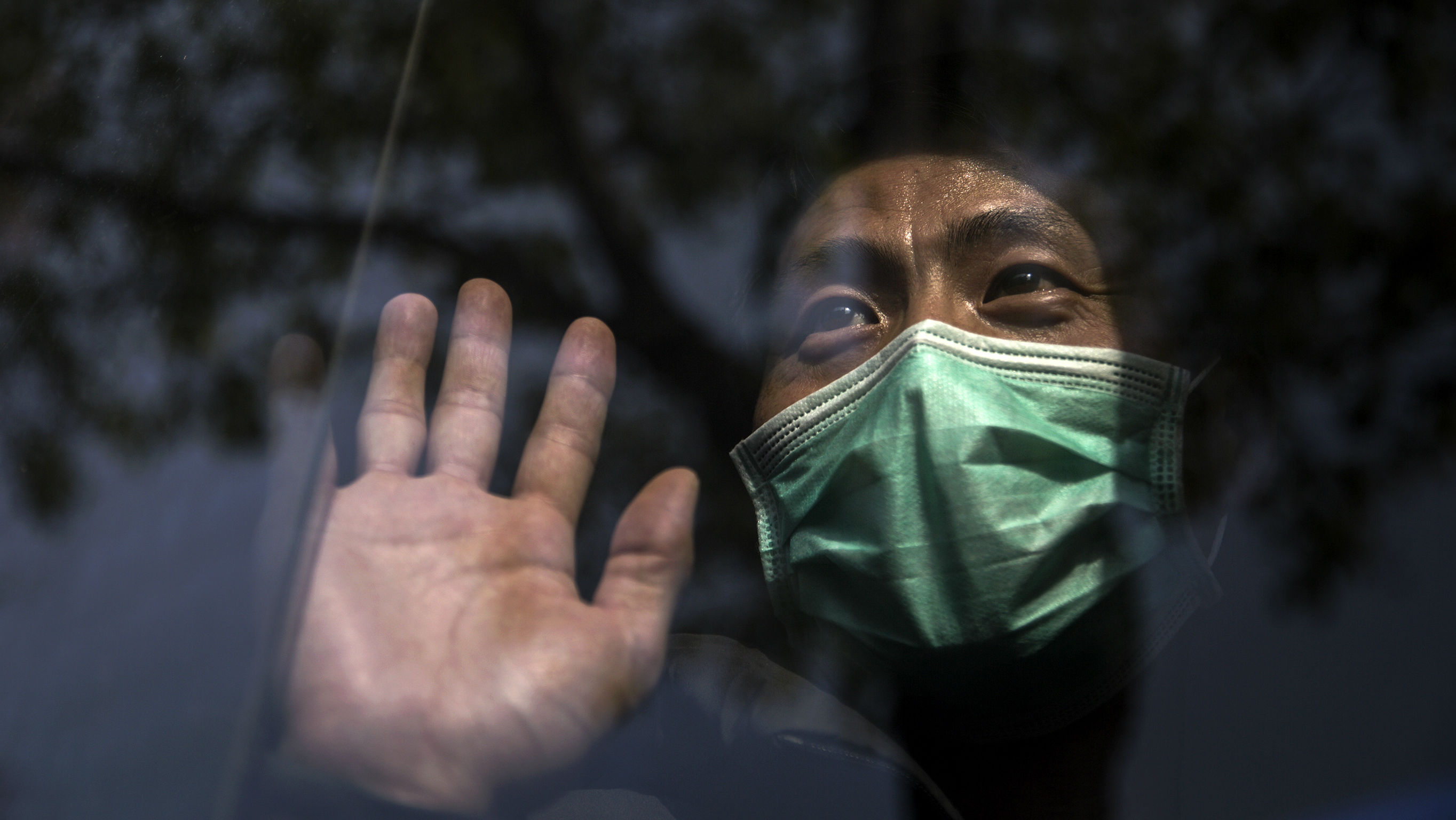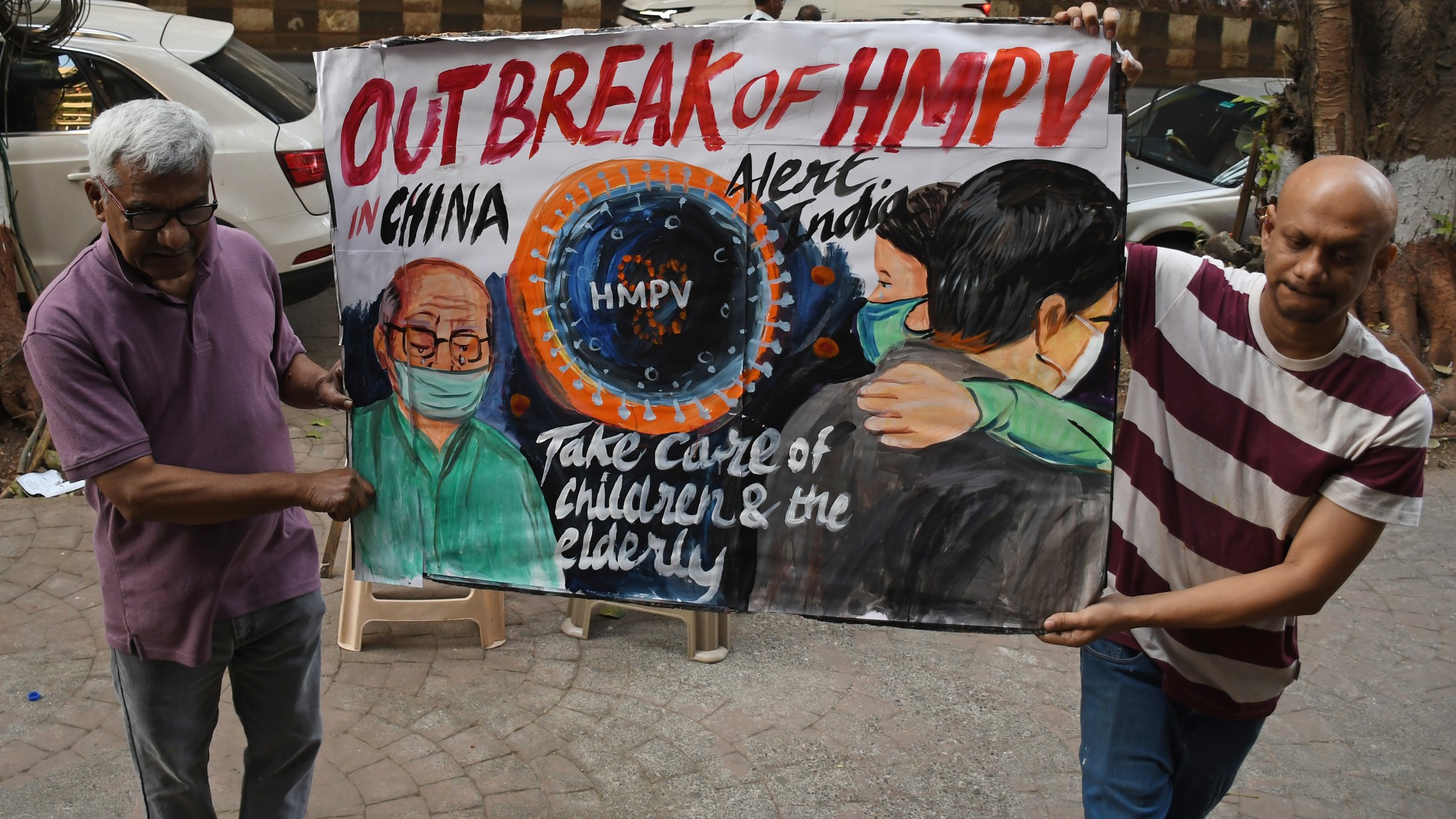How did the new coronavirus start?
The pandemic has been traced back to China

The global tally of confirmed Covid-19 coronavirus infections has soared to more than 785,000, with almost 38,000 deaths, according to latest figures.
As countries worldwide introduce emergency measures in a bid to curb the spread of the new virus, scientists are working to identify the exact origins of the pandemic.
Here is what we know so far.
The Week
Escape your echo chamber. Get the facts behind the news, plus analysis from multiple perspectives.

Sign up for The Week's Free Newsletters
From our morning news briefing to a weekly Good News Newsletter, get the best of The Week delivered directly to your inbox.
From our morning news briefing to a weekly Good News Newsletter, get the best of The Week delivered directly to your inbox.
Where did it come from?
Coronavirus appears to have originated in a market in the Chinese city of Wuhan, where live wild animals including marmots, birds, rabbits, bats and snakes were traded.
The Telegraph says that such markets pose a “heightened risk of viruses jumping from animals to humans”, because hygiene standards are “difficult to maintain if live animals are being kept and butchered on site”.
On 31 December, the World Health Organization (WHO) received the first reports of what we now know was a Covid-19 infection.
A free daily email with the biggest news stories of the day – and the best features from TheWeek.com
The Wuhan market was shut down for inspection and cleaning on 1 January, but the virus appears to have already spread further by that point. Wired reports that some early Covid-19 patients people had no known link to the market - promping suggestions that the infection might even have pre-dated the market cases.
How did it spread?
On 11 January, Chinese state media reported the first known death linked to the virus. Within nine days, the first cases outside mainland China were confirmed, in Japan, South Korea and Thailand.
By 21 January, experts were in agreement that the disease could be spread through human-to-human contact.
Less than two weeks later, a 44-year-old man in the Philippines died after being infected, the first coronavirus-related death reported outside China. According to disease-modelling experts, on average, each infected person transmits the virus to about 2.6 others, though the range is between 1.5 and 3.5, says The Wall Street Journal (WSJ).
One of the worst outbreaks was on a cruise ship anchored off Japan. More than 700 people on board tested positive for the virus.
The WSJ says the virus transmits through “respiratory droplets” when an infected person speaks, coughs or sneezes. The droplets can settle on surfaces like a desk or door handle, where they can survive for a period. “A person can become infected by touching a contaminated surface, then touching their mouth, nose or eyes,” as the newspaper explains.
What is the animal source of coronavirus?
Infectious disease experts at California's Scripps Research Institute published a paper in the journal Nature in mid-March outlining a study on the genetic sequencing of the Covid-19 coronavirus. Putting paid to a number of conspiracy theories, the research conclusively ruled out that the virus could have been manufactured in a lab or somehow engineered.
Scientists widely believe that the new coronavirus was intially transmitted from animals to humans, but the exact type of creature responsible has not yet been identified.
As Wired says: “Although an initial analysis of the virus that causes Covid-19 suggested it was similar to viruses seen in snakes, the hunt for the animal source of Covid-19 is still on.”
In February, scientists at the Wuhan Institute for Virology published a paper about research which found that the genetic make-up of the new coronavirus was 96% identical to that of a coronavirus found in bats.
Another study, published last week in the journal Nature, suggests Malayan pangolins may have transmitted the Covid-19 coronavirus to humans. The researchers say that genetic sequences of several strains of coronavirus found in pangolins were between 88.5% and 92.4% similar to the virus now infecting hundreds of thousands of humans worldwide.
Whichever animal gave humans the virus, “that animal was probably one that some Chinese people like to eat”, concludes The Guardian.
“If this is indeed the route the virus took to humans, it has two critical interfaces: one between us and the intermediate host, possibly a pangolin, and one between that host and bats.”
-
 Political cartoons for January 4
Political cartoons for January 4Cartoons Sunday's political cartoons include a resolution to learn a new language, and new names in Hades and on battleships
-
 The ultimate films of 2025 by genre
The ultimate films of 2025 by genreThe Week Recommends From comedies to thrillers, documentaries to animations, 2025 featured some unforgettable film moments
-
 Political cartoons for January 3
Political cartoons for January 3Cartoons Saturday's political cartoons include citizen journalists, self-reflective AI, and Donald Trump's transparency
-
 Covid-19 mRNA vaccines could help fight cancer
Covid-19 mRNA vaccines could help fight cancerUnder the radar They boost the immune system
-
 The new Stratus Covid strain – and why it’s on the rise
The new Stratus Covid strain – and why it’s on the riseThe Explainer ‘No evidence’ new variant is more dangerous or that vaccines won’t work against it, say UK health experts
-
 RFK Jr. vaccine panel advises restricting MMRV shot
RFK Jr. vaccine panel advises restricting MMRV shotSpeed Read The committee voted to restrict access to a childhood vaccine against chickenpox
-
 RFK Jr. scraps Covid shots for pregnant women, kids
RFK Jr. scraps Covid shots for pregnant women, kidsSpeed Read The Health Secretary announced a policy change without informing CDC officials
-
 New FDA chiefs limit Covid-19 shots to elderly, sick
New FDA chiefs limit Covid-19 shots to elderly, sickspeed read The FDA set stricter approval standards for booster shots
-
 RFK Jr.: A new plan for sabotaging vaccines
RFK Jr.: A new plan for sabotaging vaccinesFeature The Health Secretary announced changes to vaccine testing and asks Americans to 'do your own research'
-
 Five years on: How Covid changed everything
Five years on: How Covid changed everythingFeature We seem to have collectively forgotten Covid’s horrors, but they have completely reshaped politics
-
 HMPV is spreading in China but there's no need to worry
HMPV is spreading in China but there's no need to worryThe Explainer Respiratory illness is common in winter